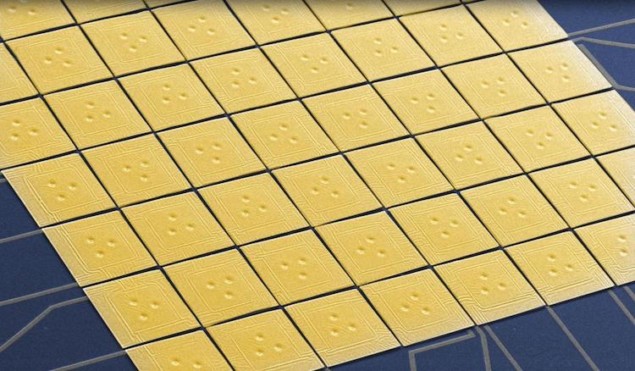
Nuclear clocks are a tick closer to reality thanks to experiments that measured the energy of the lowest excited state of a thorium-229 nucleus to the highest precision ever. A clock based on transitions between such nuclear states would be much more accurate than existing atomic clocks and would therefore place tighter constraints on the Standard Model of particle physics.
Atomic clocks “tick” at frequencies set by the regular transitions of electrons within atoms or ions, as measured by a laser kept in resonance with these transitions. Today’s best atomic clocks are accurate to within one part in 1018, which means they would slow down by less than one second if left running for 13 billion years (the age of the universe). However, a clock that relied on nuclear transitions would be more accurate still, because the small size of an atomic nucleus relative to an atom’s electron shell means that the behaviour of the former is less affected by external electromagnetic fields.
Too low to be detected?
One promising candidate for a nuclear “clock” transition is the one between the ground state of the thorium-229 nucleus and its lowest nuclear excited state, thorium-229m. This state is sometimes called the isomer state due to its long lifetime, and it was discovered by the physicists L A Kroger and C W Reich in 1976 during an analysis of thorium’s nuclear level structure.
The energy difference between ground-state thorium-229 and excited thorium-229m is so small that Kroger and Reich were unable to observe separate spectral lines for the transition using the technology available to them at the time. Instead, they inferred the existence of thorium-229m from an anomaly in their measurements: one of the gamma-ray energies predicted by theory was missing in the measured signals.
Since then, physicists have learned that the excitation energy of thorium-229m (and thus the energy of the radiation given off when the thorium nucleus returns to its ground state) is the lowest out of all nuclear excited states, corresponding to a frequency in the upper UV rather than the gamma-ray region of the electromagnetic spectrum. According to Thorsten Schumm of Austria’s Vienna University of Technology, who initiated the new research effort, it is therefore possible to “promote” a thorium nucleus into its lowest excited state simply by shining UV light onto it with a table-top laser. Once this feat is achieved in a controlled way, a nuclear clock could then be realized by measuring the oscillation frequency of the thorium nucleus as it transitions between thorium-229 and thorium-229m.
Detecting low-energy “UV gamma rays”
The catch is that the energy of the excited state is not yet known with high enough precision to determine the exact wavelength of UV light needed to drive such a transition. Christian Enss and Andreas Fleischmann of the Kirchhoff Institute for Physics at the University of Heidelberg, Germany, have now taken an important step towards overcoming this problem. They did so by repeating Kroger and Reich’s gamma spectroscopy measurement with a new, specially-designed state-of-the-art gamma spectrometer: a magnetic micro-calorimeter cooled to a fraction of a degree above absolute zero (-273 °C).
This micro-calorimeter, known as maXs30, detects the low-energy “UV gamma rays” emitted during the transition from thorium-229m to thorium-229 by monitoring the tiny temperature increase that occurs whenever a gamma ray is absorbed in the device. The heat increase changes the magnetization of the detector and this change is then converted into an electric signal using SQUID magnetometers similar to those routinely employed in magnetic resonance tomography.
Challenging measurement
While the technique is similar to that used in some previous studies, the new measurements, reported in Physical Review Letters, have produced much more accurate values for the thorium-229m energy thanks to the resolution of the calorimeter. The researchers also went to great lengths to “clean up” their thorium-229 samples. They obtained their samples via an established technique based on the alpha decay of radioactive uranium-233. This decay process generates thorium-229 nuclei in various states, including thorium-229m, and it is accompanied by the emission of multiple gamma rays, each of which corresponds to a transition between specific nuclear levels of thorium-229. The energy of thorium-229m can then be calculated by subtracting the measured energies of appropriate gamma-ray lines.
To make such measurements possible, though, the uranium-233 sample produced by Christoph Düllmann’s team at Johannes Gutenberg University Mainz first had to be chemically treated to remove all “daughter” decay products that had built up over time. The researchers also removed unwanted radioisotopes, the decay of which can produce an unwanted background in the signal they wished to measure. They then designed a source and sample container in a special geometry that minimized any interference to the weak signals as they travelled from the sample to the calorimeter. All these precautions are necessary, the researchers explain, because only one in 10,000 decay processes produces a useful signal for determining the thorium-229m energy.
Most precise value
Ultimately, this hard work paid off: the team’s result represents the most precise value of the isomer state’s energy ever measured, at 8.10(17) eV (the numbers in brackets denote the uncertainty of the last digits). This result compares well to the best previously-measured value of 8.28(0.17) eV, and corresponds to light with a wavelength of 153.1(32) nm.

Nuclear clock could be one tick closer
Since there are at present no continuous-wave lasers operating at such wavelengths, the researchers are instead using frequency combs – laser sources with spectra containing equidistant lines that allow for incredibly precise spectroscopic measurements – to promote thorium-229 into its excited state.
“The more precise energy value is of great importance for obtaining a direct laser excitation of the nuclear transition, which will open a new field of research and bring us closer to a nuclear clock”, says Ekkehard Peik from PTB, Germany’s National Metrology Institute, who was not involved in the work. Such a clock, first proposed in 2003, would be extremely sensitive to the value of the fine structure constant 𝛼, which measures the strength of the electromagnetic interaction – one of the four physical forces in nature. This extra sensitivity could make it possible for physicists to determine whether this constant is indeed always constant, or whether it varies under certain conditions. Variations, if discovered, might imply physics beyond the Standard Model of particle physics.



